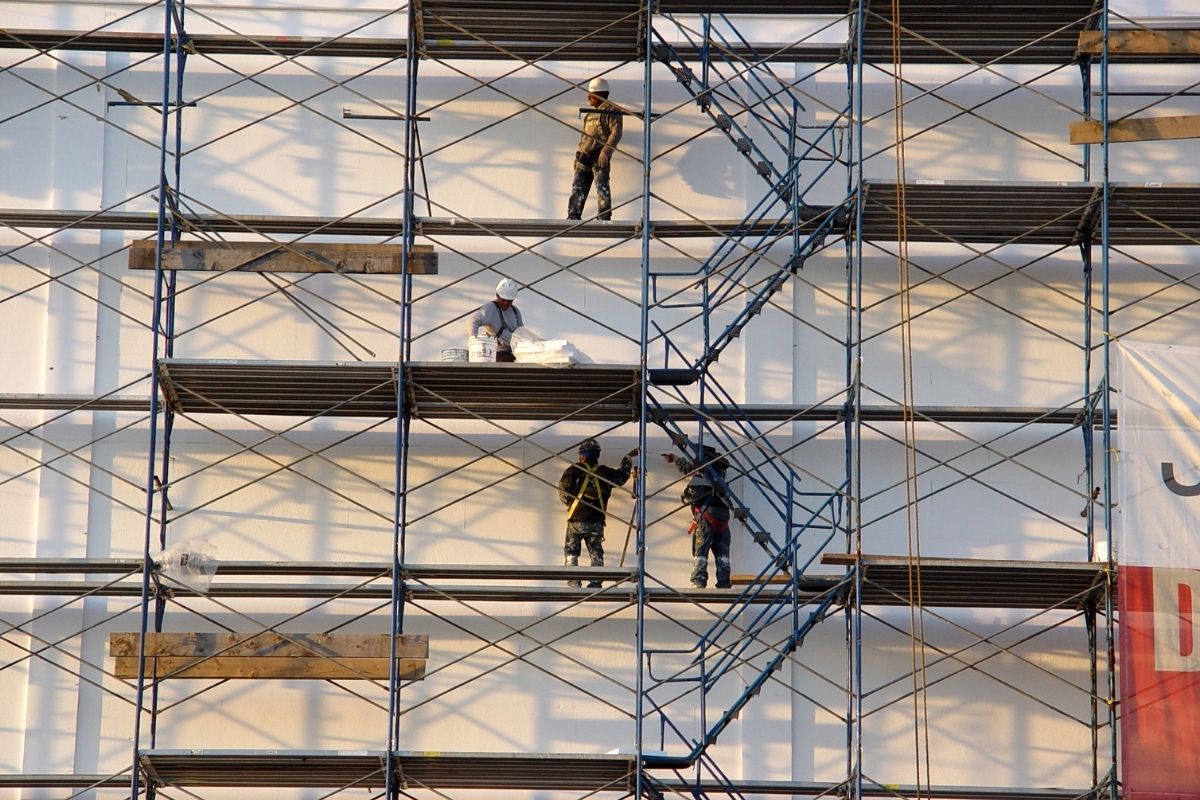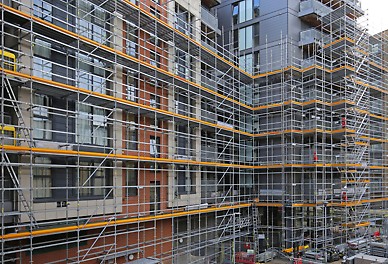Affordable Domestic Scaffolding for Every Home Renovation Project
Affordable Domestic Scaffolding for Every Home Renovation Project
Blog Article
Exploring the Different Kinds Of Scaffolding Made Use Of in Construction Tasks
The building and construction market counts heavily on different kinds of scaffolding to meet specific task needs, each offering distinctive advantages and applications. Standard structure scaffolding provides a strong structure for basic jobs, while suspended scaffolding is essential for job on skyscraper frameworks.

Typical Structure Scaffolding
Standard frame scaffolding is one of the most extensively used methods in the building market due to its effectiveness and adaptability. This system contains horizontal and upright structures that are constructed to develop a secure system for materials and workers. The major elements consist of upright articles, horizontal journals, and angled braces, which with each other supply a strong structure that can sustain substantial tons.
One of the crucial benefits of traditional frame scaffolding is its flexibility to various building and construction tasks, ranging from household buildings to large commercial frameworks. The modular design allows for easy assembly and disassembly, making it efficient for both short-term and long-lasting tasks. Additionally, the system can be personalized in height and width, fitting various structure layouts and website problems.
Safety is critical in scaffolding applications, and conventional framework systems are outfitted with guardrails and toe boards to stop falls and ensure worker security. Routine evaluations and adherence to security guidelines are crucial in keeping the honesty of the scaffold (Scaffolding). Generally, traditional framework scaffolding remains a fundamental selection in the building industry, providing a dependable platform for labor and improving total job effectiveness

Suspended Scaffolding
Suspended scaffolding uses a distinct remedy for building projects that require access to raised surface areas, particularly in circumstances where typical framework scaffolding might be impractical. This kind of scaffolding is generally suspended from the roof or upper degrees of a framework, using a system of ropes, sheaves, and systems to create a working space that can be readjusted to various heights.
One of the main benefits of put on hold scaffolding is its adaptability. It can be easily repositioned or reduced to suit adjustments in construction needs, making it ideal for tasks such as window setup, frontage job, and upkeep on high-rise buildings. Furthermore, the minimal footprint of suspended scaffolding enables better use ground room in city settings, where room is frequently minimal.
Safety and security is a critical consideration in using suspended scaffolding. Appropriate rigging and anchoring systems should be used to ensure security and protect against mishaps. Operators must also be learnt the safe use this devices. Overall, put on hold scaffolding supplies a effective and reliable option for accessing hard-to-reach areas in various construction situations, enhancing both productivity and safety on site.
System Scaffolding
System scaffolding, frequently considered a modern option in the scaffolding sector, consists of pre-engineered parts that can be quickly put together and adjusted for numerous building tasks. Scaffolding. This kind of scaffolding is identified by its modular style, which enables flexibility and efficiency on work sites, accommodating various heights and right here architectural requirements
Normally made from high-strength steel or aluminum, system scaffolding supplies enhanced toughness and stability. The parts include vertical articles, straight journals, and angled dental braces, which interconnect securely, making certain a robust framework. The style commonly incorporates standardized installations, streamlining setting up and disassembly processes, consequently minimizing labor time and expenses.

Rolling Scaffolding
Moving scaffolding is a versatile alternative to traditional set scaffolding, created for flexibility and convenience of use on building websites. This sort of scaffolding includes a system sustained by frameworks with wheels, allowing employees to easily relocate it as required. The movement attribute substantially improves productivity, as it decreases downtime connected with constructing and taking apart repaired scaffolding.
Generally built from lightweight materials such as light weight aluminum or steel, rolling scaffolding provides a sturdy yet mobile solution for projects needing frequent repositioning - Scaffolding. It is especially useful in tasks such as painting, drywall installment, and electrical job, where accessibility to various elevations and locations is required
Safety and security is critical in rolling scaffolding design, with features such as securing wheels to avoid unintentional motion when in operation, and guardrails to safeguard workers from drops. In addition, numerous versions are adjustable in height, accommodating different job demands.
Cantilever Scaffolding

The design of cantilever scaffolding commonly includes utilizing braces or arms anchored to a structure or structure, allowing the platform to extend exterior safely. Safety and security is vital; therefore, these scaffolds must be crafted to withstand environmental problems and numerous tons. Regular assessment and maintenance are vital to make sure structural honesty and worker security.
Cantilever scaffolding is preferred for its adaptability and efficient usage of room, making it a popular choice in metropolitan atmospheres where room constraints prevail. It site link helps with less complicated access to high elevations, eventually contributing to the overall efficiency of building jobs. Similar to all scaffolding types, appropriate training and adherence to safety and security standards are crucial for workers using cantilever scaffolding.
Verdict
To conclude, the diverse kinds of scaffolding utilized in building tasks each serve distinct objectives customized to specific website requirements. Standard framework scaffolding supplies stability, while put on hold scaffolding supplies convenience for raised jobs. System scaffolding promotes quick assembly, and rolling scaffolding enhances mobility for differing job settings. Cantilever scaffolding properly addresses obstacles in city setups. Understanding these scaffolding kinds is crucial for maximizing safety and security and efficiency in building, ultimately contributing to the effective conclusion of tasks.
Conventional frame scaffolding supplies a tough foundation for general jobs, while suspended scaffolding is crucial for work on high-rise frameworks.Moving scaffolding is a versatile choice to traditional set scaffolding, created for wheelchair and ease of use on building sites. As with all scaffolding kinds, correct training and adherence to security standards are essential for employees using cantilever scaffolding.
Conventional structure scaffolding provides stability, while suspended scaffolding offers adaptability for elevated tasks. System scaffolding promotes quick setting up, and rolling scaffolding improves flexibility for varying work atmospheres.
Report this page